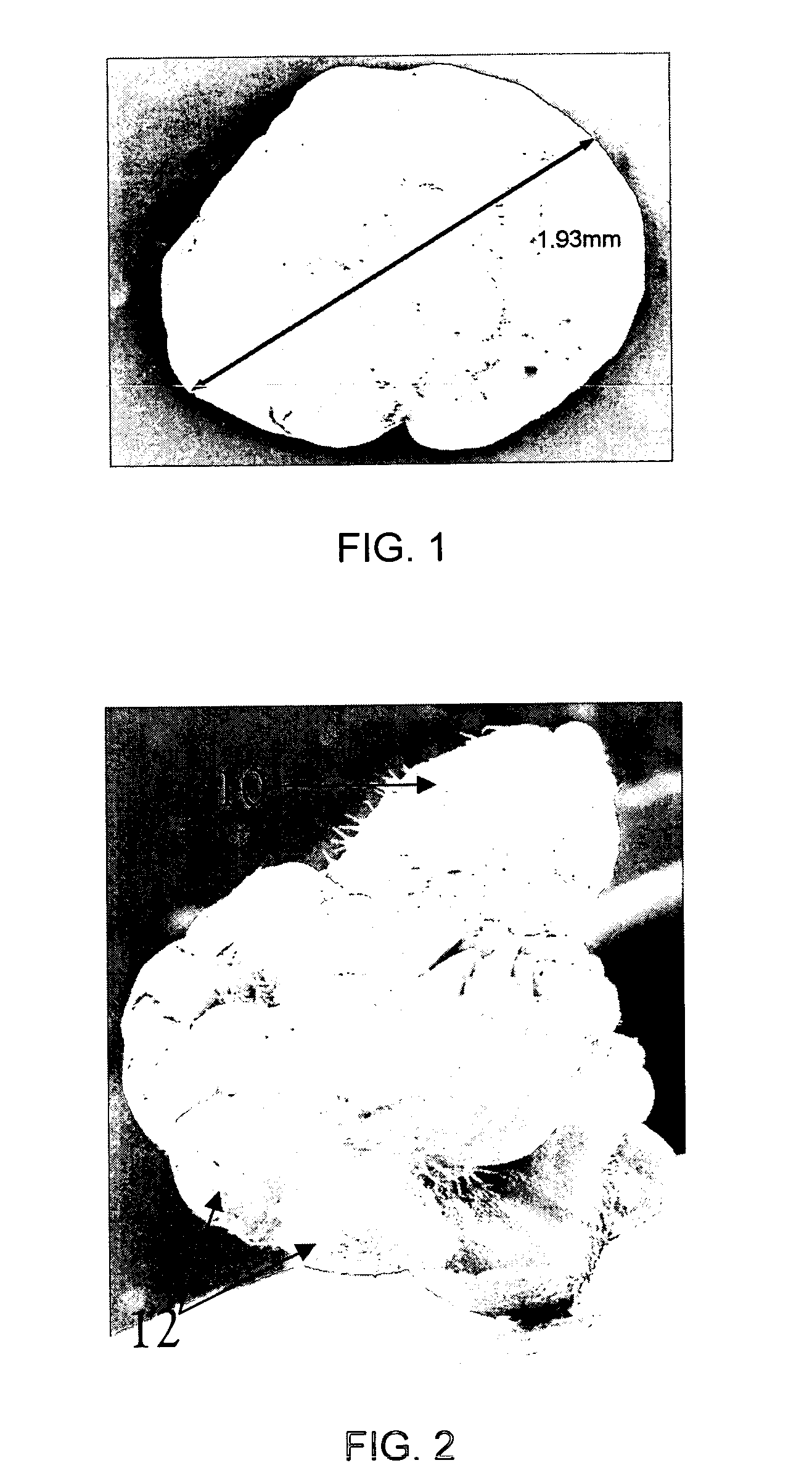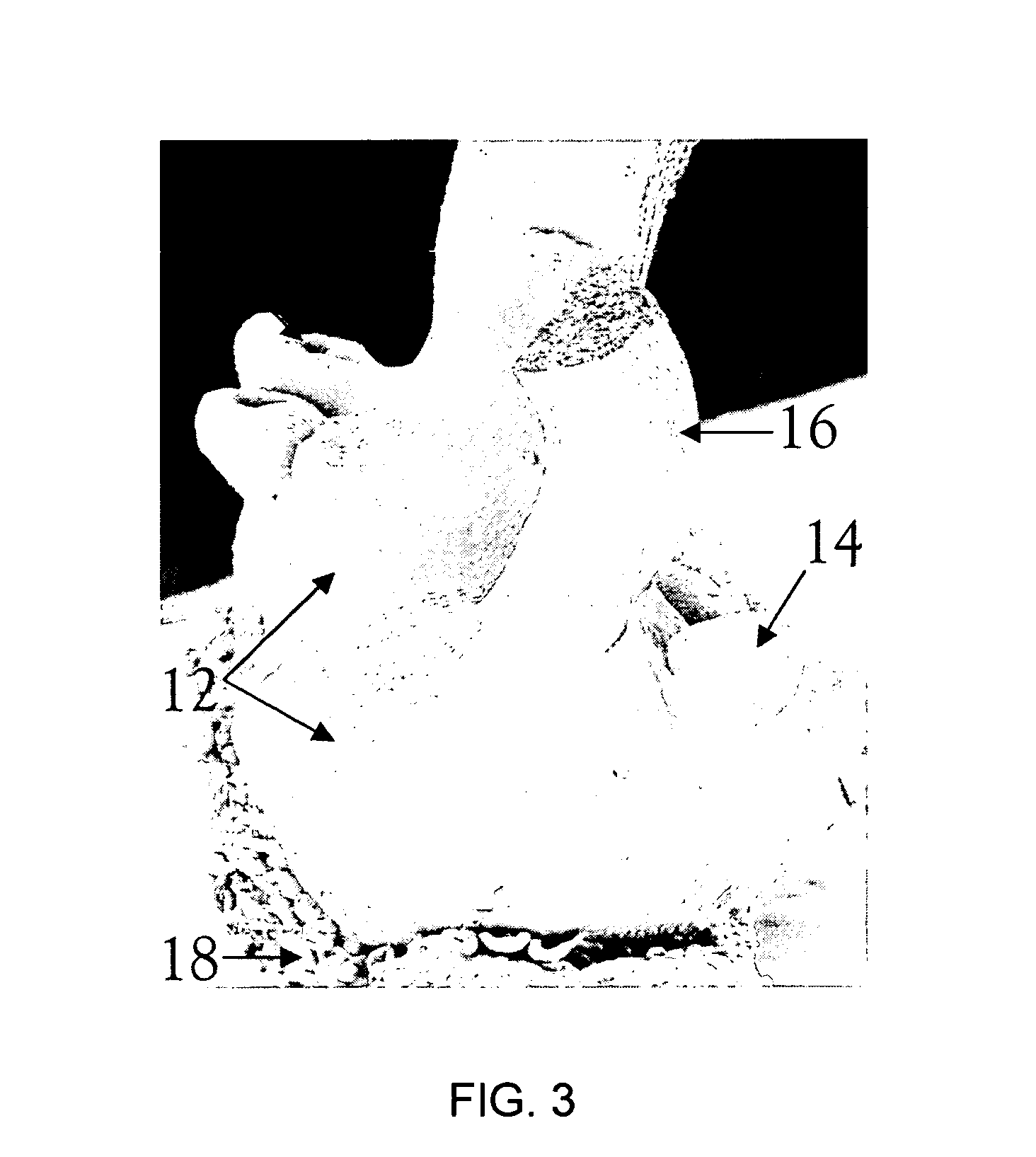Process for inducing direct somatic embryogenesis in immature scutella cells of pooideae, and rapidly regenerating fertile plants
a technology of scutella cells and embryogenesis, which is applied in the field of inducing direct somatic embryogenesis and secondary embryogenesis in monocotyledonous plant cells, and rapidly regenerating fertile plants
- Summary
- Abstract
- Description
- Claims
- Application Information
AI Technical Summary
Benefits of technology
Problems solved by technology
Method used
Image
Examples
example 1
Direct Somatic Embryogenesis, Secondary Embryogenesis and Regeneration of Barley Genotypes
i) Explant Source
[0135]Immature embryos of seven barley genotypes, as described in Table 3 herein, were used for this study, including Canadian six-row forage lines, two-row feed barley varieties and the two-row malting barley cultivar Golden Promise. Golden Promise is used extensively as a model cultivar for barley because of its ability to regenerate relatively well with in vitro culture protocols (Bregitzer et al., 1998).
[0136]Stock plants were grown in growth chambers with 16-h photoperiod (bottom / top of plants: 270 / 330 μmol m−2 s−1) with 21 / 16° C. day / night temperature regimes. Immature spikes were harvested around 14 days post-anthesis. At this developmental stage, the embryos varied from 1.5 to 2 mm in size. Spikes were collected and kept in a refrigerator at 4° C. for three to seven days for a cold pre-treatment. Immature caryopses were collected and then washed for 30 s with 70% ethano...
example 2
Direct Somatic Embryogenesis and Secondary Embryogenesis from Scutella of Barley, Wheat and Durum Wheat Amphiploids
i) Immature Scutella Culture
[0141]The tissue culture protocols and experimental unit for barley and wheat were essentially the same, and were similar to that described in Example 1. The barley and wheat embryos were 2 mm in size. Tissues were grown in the DSEM medium until the primary embryos on top of scutella were at the globular stage, and then scutella were cut into two pieces.
ii) Results
[0142]A very large number of primary and secondary embryos were produced during this experiment. Therefore, only the number of plantlets which germinated from either primary or secondary embryos was recorded (Table 4). Scutella from all barley genotypes followed the sequence of direct somatic embryogenesis, secondary embryogenesis, germination, regeneration and rooting, as in Example 1. The step of growing the embryos on rooting medium was not necessary for the wheat cultivars, beca...
example 3
Direct Somatic Embryogenesis, Secondary Embryogenesis and Regeneration of Oat, Rye Wheat, Barley, Durum Wheat, Triticum monococum and Triticum urartu
i) Explant Source
[0147]Immature embryos of oat, rye, wheat, barley, durum wheat, T monococum and T. urartu, as described in Table 5 herein, were used for this study, including the lines of Juniper and CDC Pacer in oat; perennial cereal rye (PC Rye); Hy366-BL31 and P8810-B5B3A2A2 in common wheat; DT701 in durum wheat; accessions 89, 173, 238 in T. monococum; accession 17111 in T. urartu; Golden Promise and T89047103NX in barley.
[0148]Scutella were isolated from the immature embryos as described in Example 1. Briefly, caryopses containing immature embryos at 15 days post-anthesis were dissected. At this developmental stage, the embryos were about 2 mm in length for all species, except those of T. monococum and T. urartu which were 1.5 mm in length.
[0149]ii) Immature Scutella Culture
[0150]Excised scutella were placed upside-down on the DS...
PUM
| Property | Measurement | Unit |
|---|---|---|
| Time | aaaaa | aaaaa |
| Time | aaaaa | aaaaa |
| Molar density | aaaaa | aaaaa |
Abstract
Description
Claims
Application Information
 Login to View More
Login to View More - R&D
- Intellectual Property
- Life Sciences
- Materials
- Tech Scout
- Unparalleled Data Quality
- Higher Quality Content
- 60% Fewer Hallucinations
Browse by: Latest US Patents, China's latest patents, Technical Efficacy Thesaurus, Application Domain, Technology Topic, Popular Technical Reports.
© 2025 PatSnap. All rights reserved.Legal|Privacy policy|Modern Slavery Act Transparency Statement|Sitemap|About US| Contact US: help@patsnap.com



